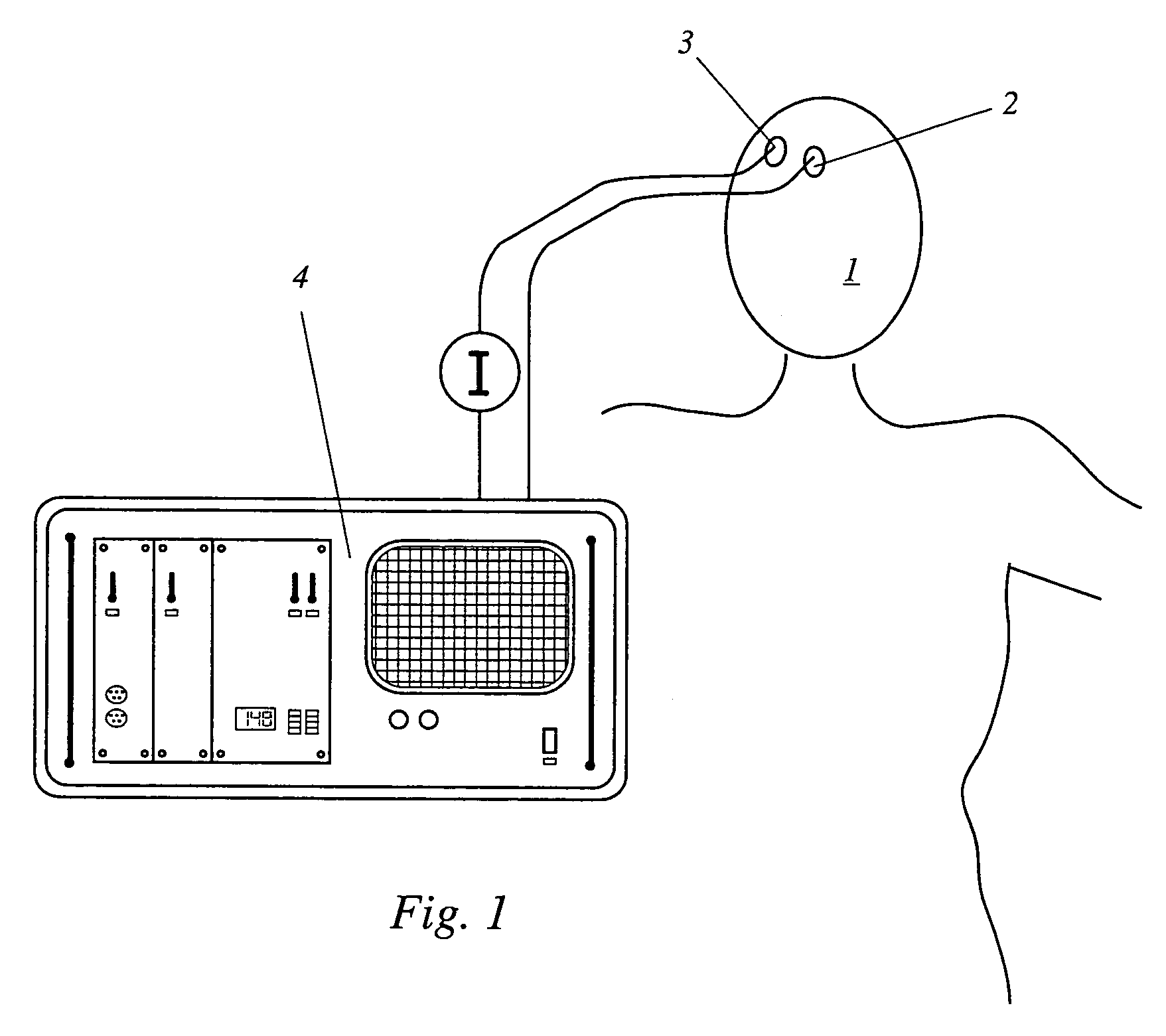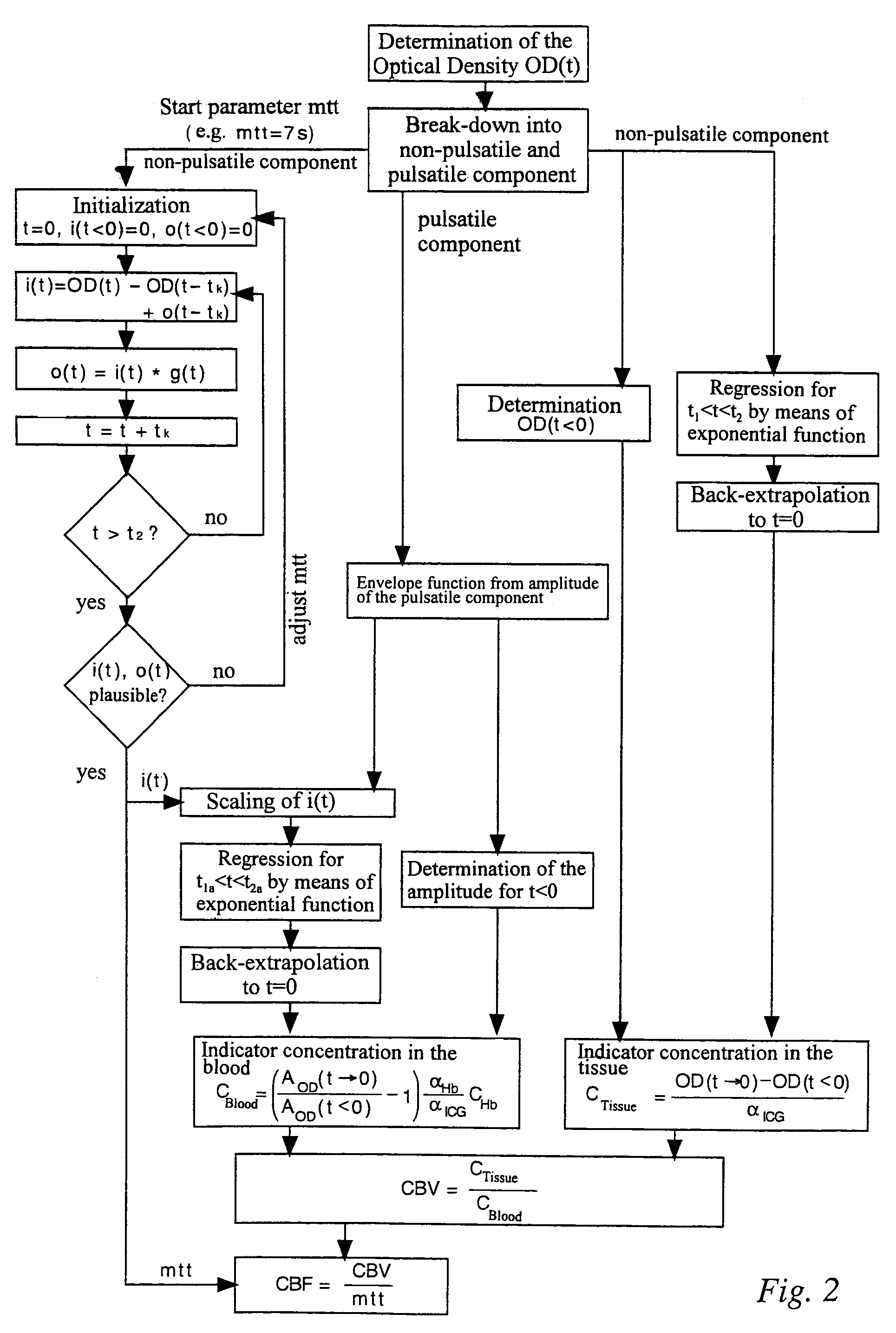Device and method for measuring blood flow in an organ
a technology for measuring blood flow and organs, applied in the direction of optical radiation measurement, instruments, catheters, etc., can solve the problems of time-consuming use, difficult implementation, and invasive measurement of input functions, and achieve the effect of less accuracy of evaluation results and greater accuracy in blood flow determination
- Summary
- Abstract
- Description
- Claims
- Application Information
AI Technical Summary
Benefits of technology
Problems solved by technology
Method used
Image
Examples
Embodiment Construction
[0023]The device according to the invention shown schematically in FIG. 1 serves to determine the cerebral blood flow of a patient, for example an intensive-care patient in neurosurgery. A first optode 2 and a second optode 3 are attached to the head 1 of the patient, by means of an elastic band (not shown), at an optimized distance from one another. A radiation source (not shown) for emitting near infrared radiation into the cerebral tissue of the patient is arranged either in first optode 2 itself, or separately from it, for example in a common housing with the evaluation unit 4. Where the radiation source is separate from first optode 2, the near infrared radiation is passed by means of a light guide to first optode 2, where the radiation is emitted. The wavelength of the emitted radiation and the indicator used must be coordinated with one another. For the indicator usually used, indocyaningreen, a wavelength of about 805 nm (but definitely in the range between 780 and 910 nm) i...
PUM
 Login to View More
Login to View More Abstract
Description
Claims
Application Information
 Login to View More
Login to View More - R&D
- Intellectual Property
- Life Sciences
- Materials
- Tech Scout
- Unparalleled Data Quality
- Higher Quality Content
- 60% Fewer Hallucinations
Browse by: Latest US Patents, China's latest patents, Technical Efficacy Thesaurus, Application Domain, Technology Topic, Popular Technical Reports.
© 2025 PatSnap. All rights reserved.Legal|Privacy policy|Modern Slavery Act Transparency Statement|Sitemap|About US| Contact US: help@patsnap.com



